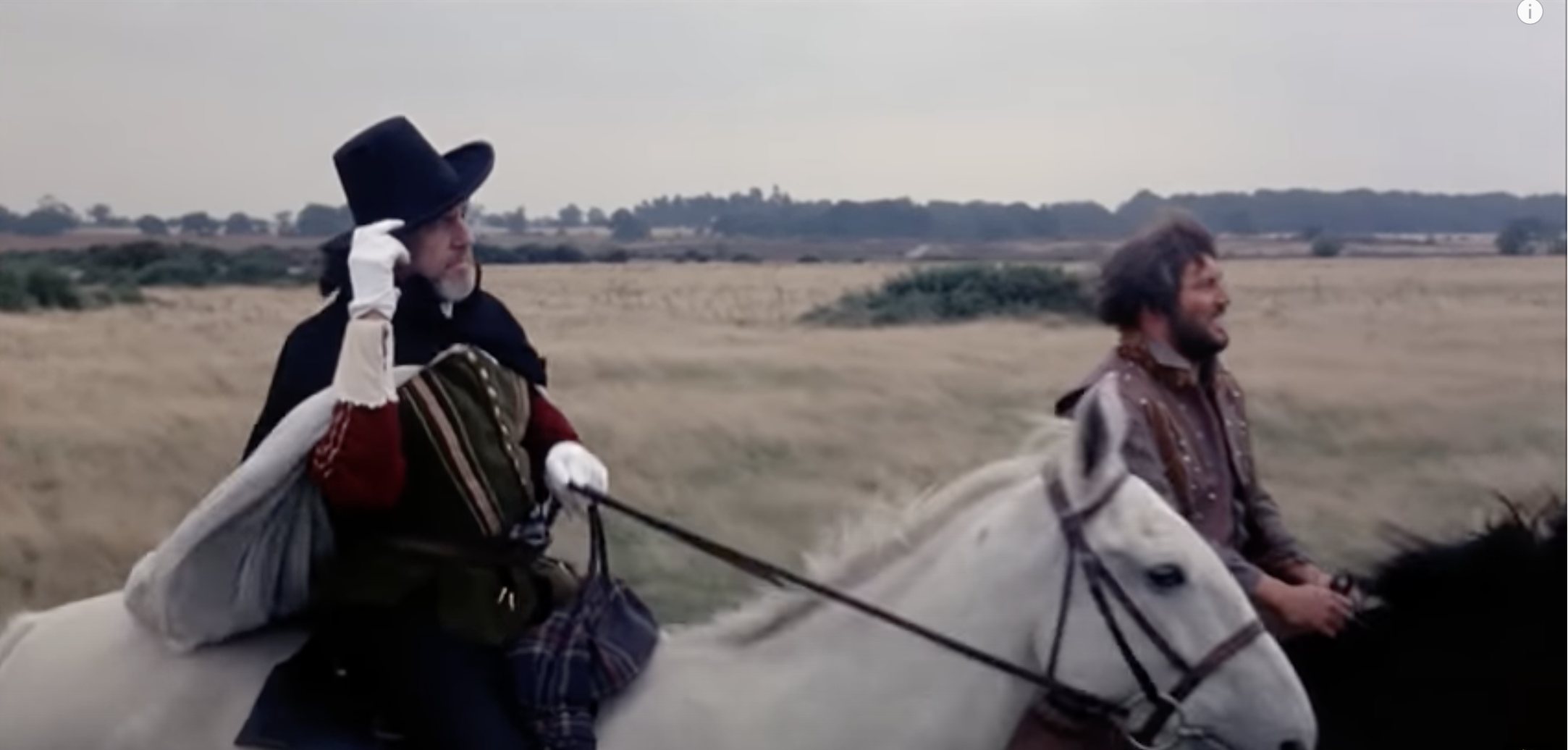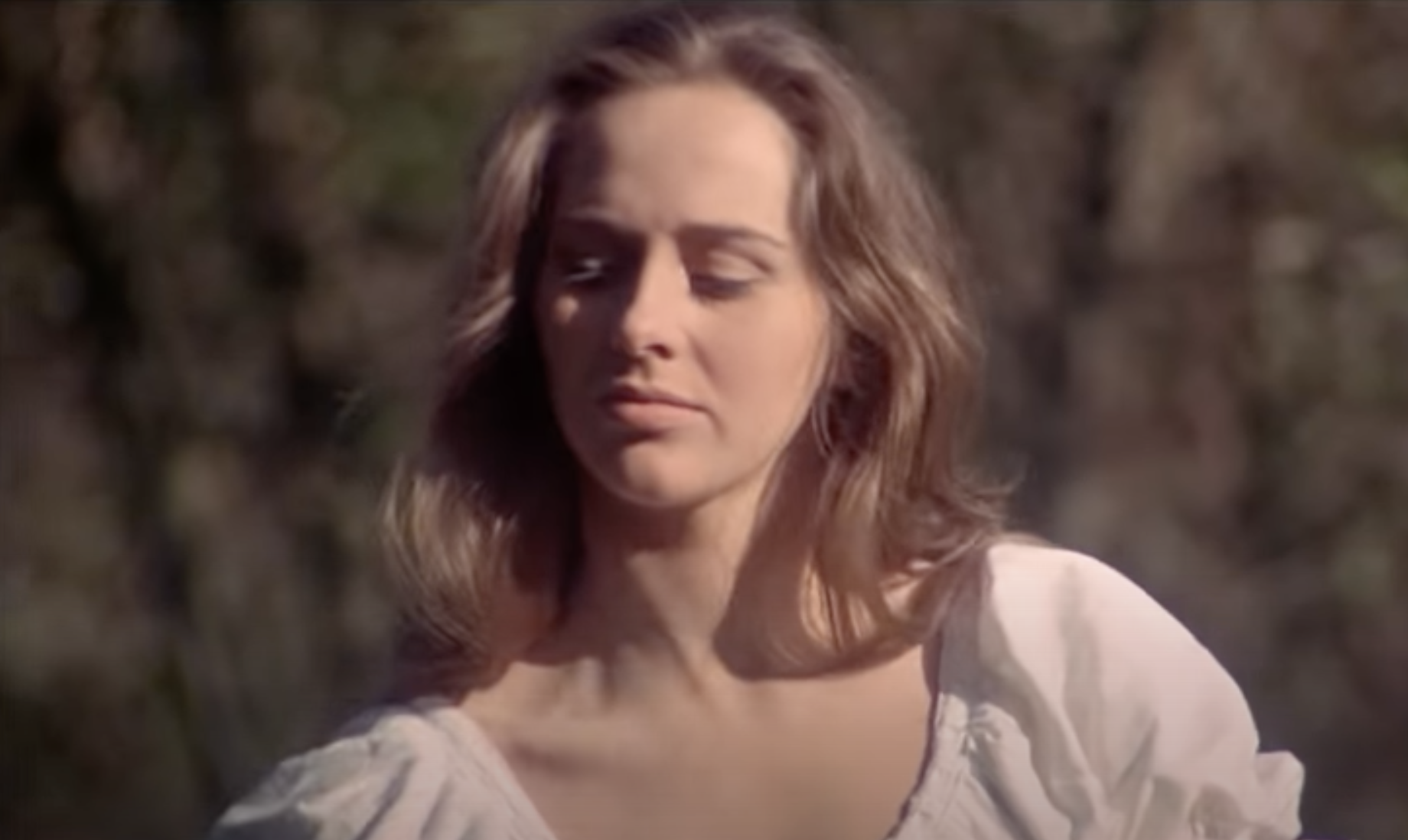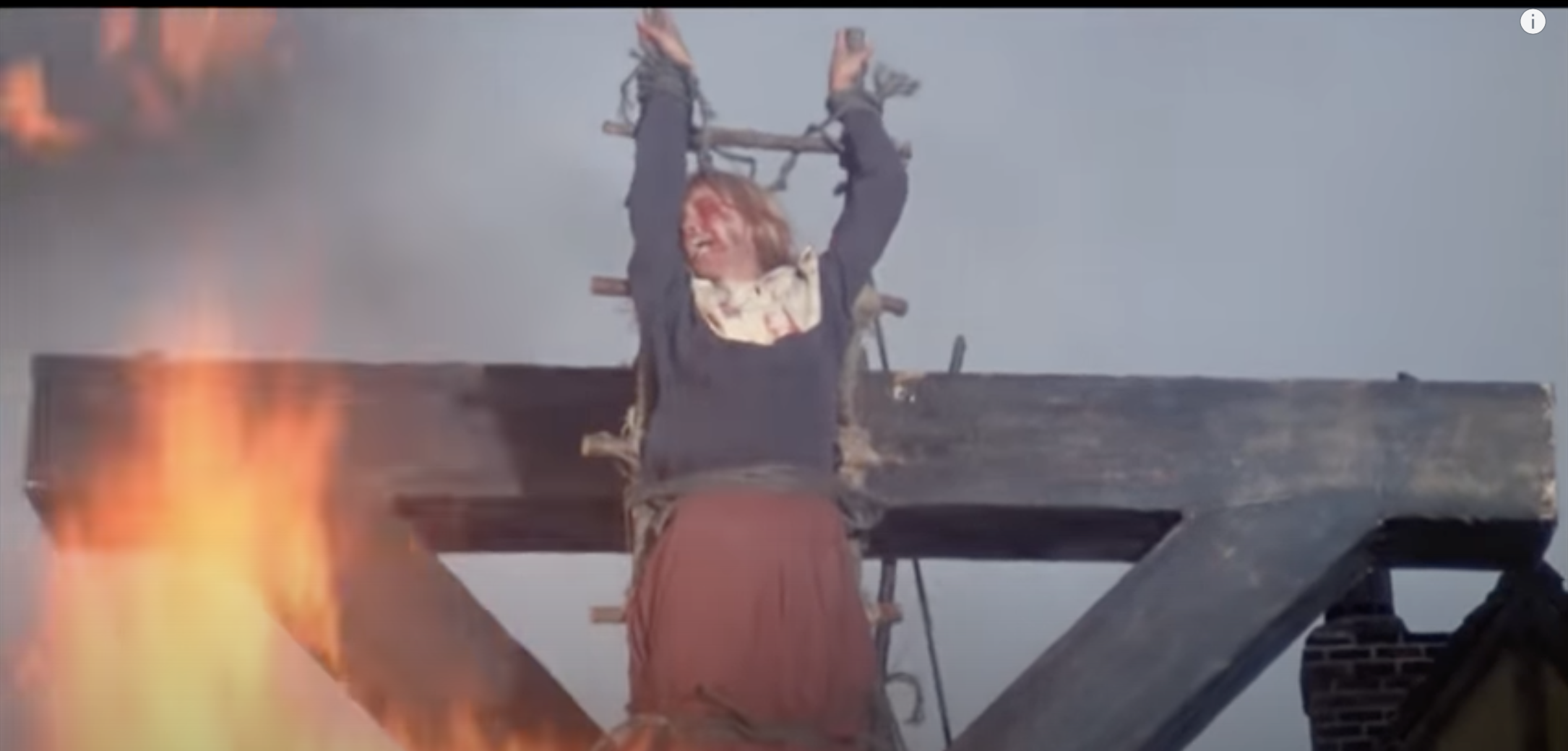
by Fiona Moore
Witchfinder General is a real game-changer not just for British horror but for horror films in general. This is a movie without monsters, ghosts, psychopathic killers or, even, witches (at least real ones). The terror comes from people’s belief in witches, and what that belief makes them do to other people, and, in making that change, this film is an artistic statement that transcends genre.
The story is set, as a clunky (and rather unnecessary, since the same information is conveyed in the first few scenes) voiceover at the start tells us, in 1645, the height of the English Civil War. It is ostensibly based on the life of a genuine historical figure of the time, Matthew Hopkins, the so-called “Witchfinder General”. He is a minor landowner who made his career travelling around Southeastern England identifying witches using bogus techniques and confessions extracted under duress. In fact, the story bears almost no resemblance at all to the known facts of Hopkins’ life, barring his name, that of his assistant Stearne (in real life their roles were reversed), the location (East Anglia) and the methods used to extract confessions from witches. This is a minor complaint, however—and might not even be a complaint, as the story the movie tells is possibly more disturbing than Hopkins’ actual biography.

The film’s main positive figure, at least at the outset, is Richard Marshall, a young Roundhead soldier engaged to Sarah Lowes, the niece of a small-town Church of England priest. Sarah’s uncle is accused of witchcraft by his neighbours (we never learn the specific reason for this, which chillingly suggests that it’s a fairly banal local conflict that escalates to horrific extremes) and Hopkins and Stearne arrive, arrest and torture the accused. Sarah, desperate to save her uncle, sleeps with Hopkins; when Stearne, envious and sadistic, rapes her, Hopkins discards his promises to Sarah and has her uncle executed. Richard, hearing of the tragedy but arriving too late to stop it, marries Sarah and swears vengeance on Hopkins. Matters escalate, leading eventually to a bloody confrontation which clearly brings home that violence only begets more violence, and that no one in this story is going to escape without severe damage.

The civil war backdrop is sketched in matter-of-factly. Perhaps surprisingly, given that subsequent British popular culture tends to dislike the Parliamentarians (in Sellars and Yeatman’s phrase, the Cavaliers were Wrong but Wromantic, and the Roundheads Right but Repulsive), the film resists the temptation to lay the blame for the witch hysteria at Cromwell’s door. Richard and his men are more or less positively portrayed, as is Cromwell himself when he turns up for a brief cameo after a successful military campaign. Some of the film’s power arguably lies in the fact that they, and Hopkins, are all ostensibly on the same side, and, while we see very little of the atrocities of the war itself, it is clearly part of what is fueling the communities’ drive to turn on their own. The viewer is also left to fill in some details themselves: for instance, the absence of a lord of the manor in the village where Sarah and her uncle live suggests he was a Royalist, possibly also hinting at why relationships have broken down between the villagers and why Sarah’s uncle is now accused of heresy.

In casting terms, Vincent Price is credibly chilling as Hopkins, largely because of the way he underplays his role: he talks about torture and murder in the same banal tones as one might discuss a land boundary dispute, and he pretends hypocritically to be serving the public interest. Robert Russell as Sterne is a much more familiar figure from horror films, loathsome and sadistic, but provides a necessary contrast to Price, acting as a kind of expression of Hopkins’ id. Newcomers Ian Ogilvy and Hilary Dwyer, as Richard and Sarah, are very pretty to look at, but they also have the acting chops to handle their characters’ descent as they are subjected to increasing torment and degradation.

Michael Reeves’ direction works well, contrasting the beautiful scenery of Southeast England with the awful behaviour of its inhabitants. His best, albeit hardest to watch, efforts come in the film’s climactic scene. In it, Hopkins escalates his method of execution from simply hanging witches to burning them—not at the stake, but strapped to a ladder slowly lowered into the fire. As this takes place, the camera turns its pitiless gaze around the crowd, showing a variety of different reactions: from religious rapture, to horror, to fear, to pleasure. Most horrifyingly, it also shows children absorbing the violence around them. We later see the same children roasting baked potatoes in the execution fire, a detail that is terrifying in its matter-of-fact presentation.

The story’s contemporary relevance is also clear. Sexism visibly fuels the witch-hunting activities, and prejudice against women and fear of their sexuality in the wider culture allows the likes of Hopkins and Stearne to flourish. Desensitisation to war, as we are seeing in America and elsewhere, allows people to condone and commit acts of violence in their own communities. Revelations after the collapse of the Nazi regime, and reports from behind the Iron Curtain, show clearly how petty grievances between neighbours can, under totalitarian rule, lead to arrests and torture. The viewer can’t leave the cinema thinking it could never happen here: clearly it not only can–it has.

The film makes the most of its economical 86 minutes, and is definitely not for the faint-hearted. By mining British folk culture and history, and by focusing on human evil itself rather than monsters and spirits, Reeves has opened up the possibilities of a whole new kind of horror movie and paved the ground for a new, artistic subgenre; I can’t wait to see what this new pioneer of British cinema will come up with next. Five out of five stars.



This is one I found I appreciated but did not enjoy. I think the horror of it was a little "too real" for me, I came out of the cinema a bit shook.
I think partially it is that I didn't expect to have this from a British Horror film starring Vincent Price, the other it is so unstylised it is quite confronting. Even the Crucible I felt more distant from it. Impressive but also not something I want to see again.
Tigon appears to be a studio to watch. Whilst Blood Beast Terror was a bit of more traditional fare, this and The Sorcerers are definitely doing something new.
I didn't enjoy it either. It's traumatic to watch and I don't plan to do so again soon. But it's definitely a sea change for horror so worth taking note of.
I think part of its power is that it's so unexpected. You go in expecting something that you don't get, and it's all the more surprising for it.
Good old Blood Beast Terror, I must re-watch that sometime!
Will this be released in the USA? It has an American star, but the subject matter is very British. (How many Americans even know there was an English Civil War?)